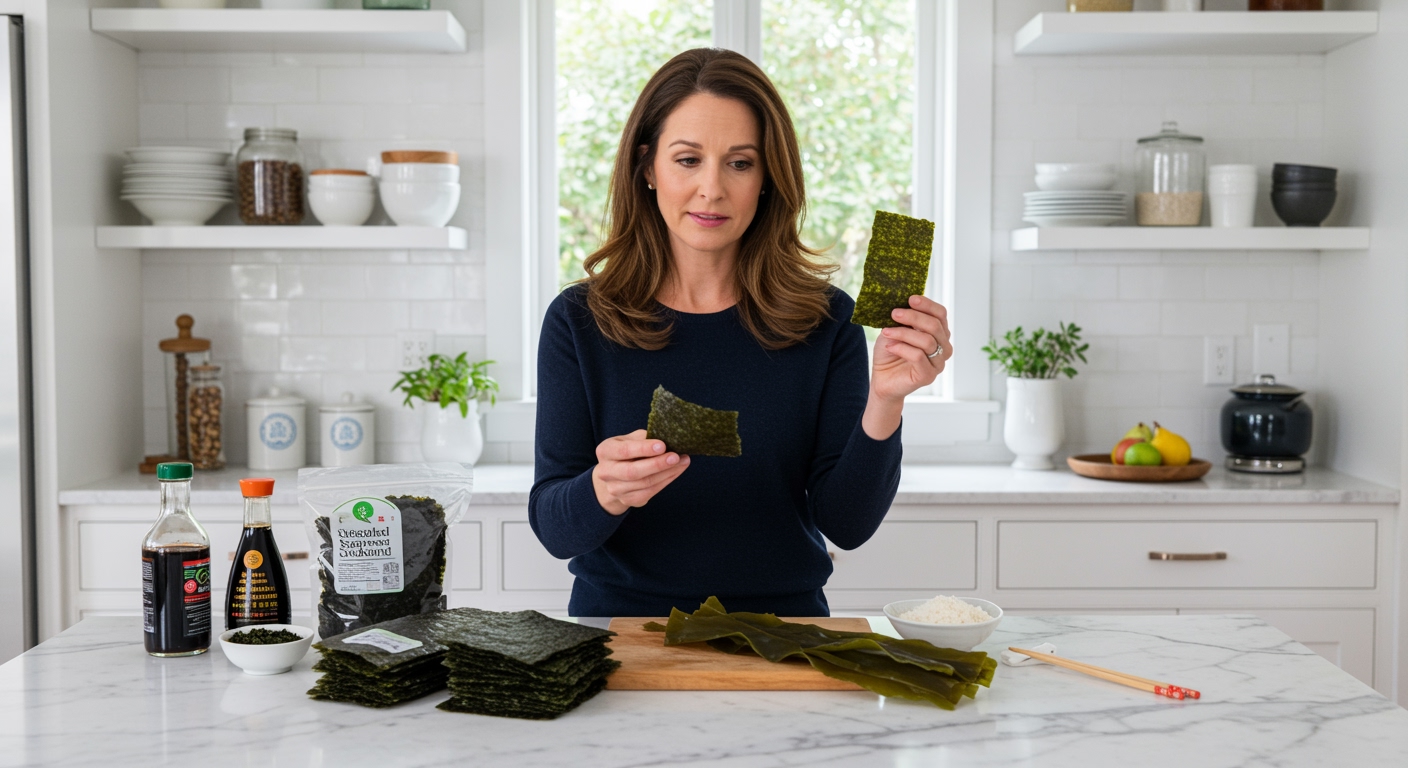✪ Key Highlight: Western psychological barriers prevent people from eating nutrient-rich seaweed despite its proven health benefits.
Introduction
Your local grocery store stocks dozens of vegetables, but you probably walk past one of the most nutritious foods on Earth without a second thought.
New research published in the journal Appetite reveals that psychological barriers, not taste or availability, keep Westerners from eating seaweed despite its incredible nutritional value.
Hi, I’m Abdur, your nutrition coach and today I’m going to analyze this groundbreaking study about why Western cultures reject one of nature’s most sustainable superfoods.
Why Do Westerners See Seaweed As Strange Food?
The research team discovered that cultural conditioning plays the biggest role in food acceptance.
Dr. Diana Bogueva, the lead researcher, found that people view seaweed as exotic or foreign rather than as regular food.
This perception stems from childhood experiences where seaweed never appeared on family dinner tables or school lunch menus.
Your brain categorizes foods based on familiarity, and unfamiliar items trigger natural rejection responses.
Social norms reinforce these attitudes because most Western communities do not include seaweed in their traditional cuisines.
The study shows that people who grow up eating seaweed view it as normal food, while those without early exposure see it as unusual.
✪ Fact: Seaweed contains more nutrients per gram than most land vegetables including high levels of iodine, iron, and vitamin B12.
What Knowledge Gaps Keep People Away From Seaweed?
The research revealed that most Westerners have zero knowledge about seaweed preparation methods.
People feel overwhelmed when they see seaweed products because they do not know how to cook or incorporate them into familiar dishes.
This knowledge gap creates a psychological barrier that prevents even curious consumers from experimenting with seaweed.
Unlike other vegetables where cooking methods seem obvious, seaweed requires specific techniques that most Western cookbooks do not cover.
The study found that people want simple recipes and clear instructions before they will try new foods like seaweed.
Educational resources about seaweed remain limited in Western countries, leaving consumers without practical guidance.
✪ Pro Tip: Start with nori sheets used in sushi rolls as they require no cooking and have a mild taste that most people find acceptable.
How Do Safety Concerns Affect Seaweed Acceptance?
Many consumers worry about heavy metal contamination and excessive iodine levels in seaweed products.
These safety concerns persist even though research shows that moderate seaweed consumption poses minimal risks when products come from reputable sources.
The study found that negative media coverage about seaweed contamination creates lasting fear in consumer minds.
People remember scary headlines about toxins better than they remember positive research about seaweed benefits.
This psychological phenomenon, called negativity bias, makes consumers focus on potential risks rather than proven advantages.
Responsible sourcing and proper processing eliminate most safety concerns, but consumers rarely receive this reassuring information.
✪ Note: Choose certified organic seaweed products from established brands to minimize any contamination risks while maximizing nutritional benefits.
What Marketing Barriers Prevent Seaweed Adoption?
Seaweed products often appear in specialty sections of grocery stores rather than with regular vegetables.
This placement reinforces the perception that seaweed is exotic or unusual rather than everyday food.
Package designs frequently emphasize the foreign origins of seaweed instead of highlighting familiar culinary applications.
Higher prices compared to conventional vegetables make seaweed seem like a luxury item rather than a practical nutrition choice.
Limited availability in mainstream supermarkets forces consumers to seek out specialty stores, creating additional barriers.
The research suggests that better marketing strategies could help normalize seaweed consumption by emphasizing familiar benefits like nutrition and sustainability.
✪ Fact: Seaweed grows 30 times faster than land plants and requires no fresh water, fertilizer, or pesticides to produce high-quality nutrition.
Can Education Change Western Seaweed Attitudes?
The study emphasizes that education represents the most powerful tool for changing food attitudes.
People who learn about seaweed preparation methods and nutritional benefits show increased willingness to try these foods.
Cooking demonstrations and recipe sharing help consumers overcome their fear of the unknown.
Social media influencers and cooking shows could play crucial roles in normalizing seaweed consumption through positive exposure.
The research found that people who already eat seaweed become advocates who encourage others to try it.
This ripple effect can gradually change social norms as more people discover that seaweed tastes better than they expected.
✪ Pro Tip: Try adding small amounts of powdered kelp to soups and stews as a natural flavor enhancer that boosts mineral content without obvious taste changes.
The Bottom Line
Western rejection of seaweed has nothing to do with taste and everything to do with psychological barriers created by unfamiliarity and cultural conditioning.
Food acceptance starts in your mind, not on your tongue.
What are your thoughts about trying seaweed in your diet, and do you think education could help overcome these cultural barriers?
References
At NutritionCrown, we use quality and credible sources to ensure our content is accurate and trustworthy. Below are the sources referenced in creating this article:
- PMC: Seaweed as a Functional Food
- Wageningen University: Consumer Acceptance of Seaweed
- PMC: Nutritional and Health Benefits of Seaweed
- Brunel University: Why Westerners Are Reluctant to Eat Seaweed





